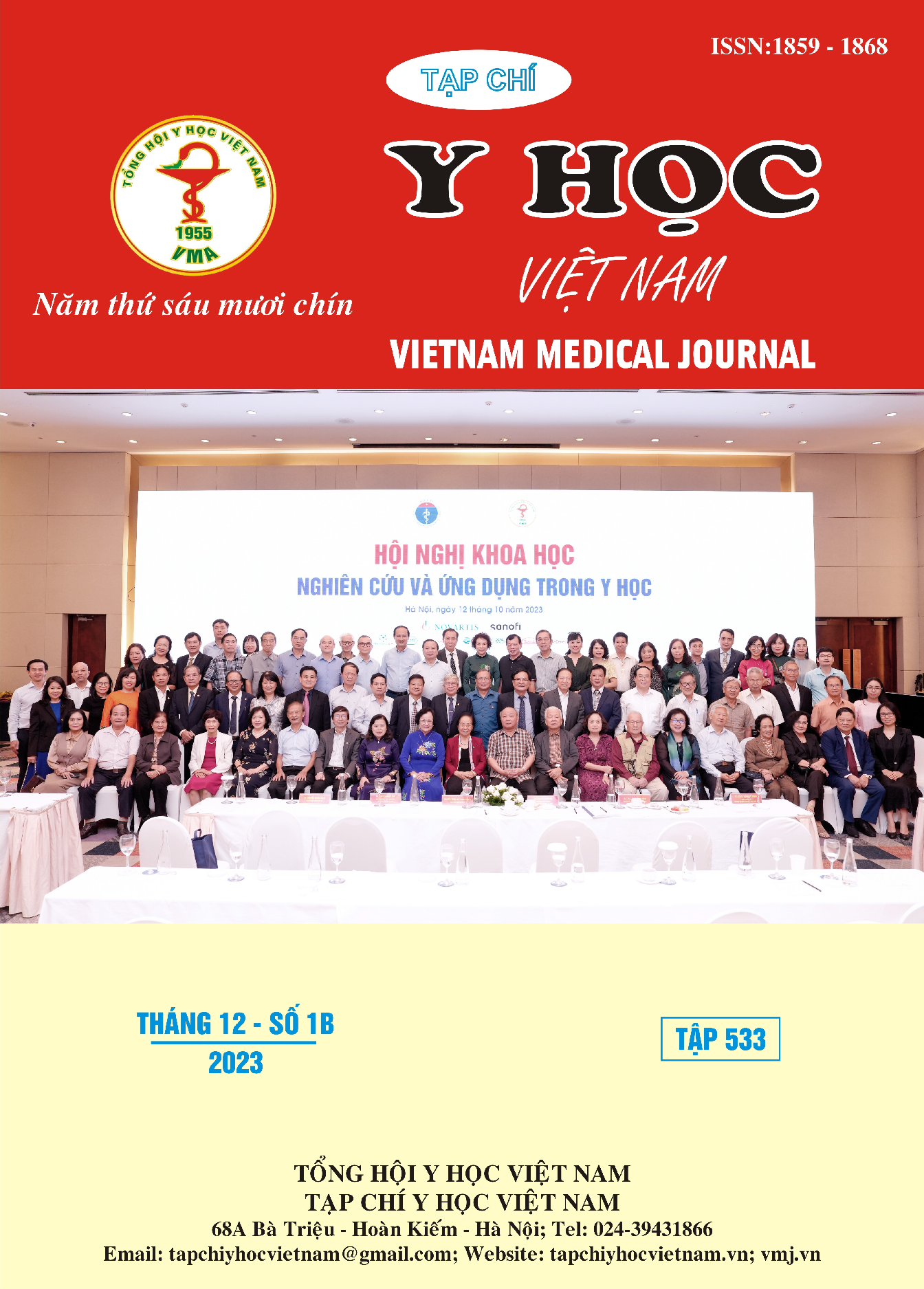SHORT-TERM AND MIDDLE-TERM RESULTS OF ENDOSCOPIC INTERVENTION USING 1470 NM WAVELEVEL LASER IN TREATMENT CHRONIC LOWER LOWER LIMB VENOUS INSUFFICIENCY
Main Article Content
Abstract
Objective: Evaluate the short-term and medium-term effectiveness of 1470 nm laser endovascular intervention in the treatment of chronic superficial lower limb venous insufficiency at the Department of Cardiology, Thai Nguyen Central Hospital. Study subjects: 121 patients with lower limb vascular insufficiency, with 121 great saphenous veins. Research method: cross-sectional description, retrospective combined with prospective. Results: Chronic lower limb venous insufficiency occurs mainly in women, accounting for 78.5%. After 1 month and 12 months of treatment, it was found that patients with chronic lower limb venous insufficiency treated with 1470nm laser thermal ablation were mainly female, accounting for 78.5%, and the average age of the disease was 78.5%. 56.36 ± 14.16 years old. Occupational risk factors of standing or sitting for ≥ 8 hours have a very high risk of causing disease (81%). The clinical improvement results are clearly reduced after 1–12 months of treatment in terms of bunions, which decreased by up to 85.1% after 1 month; symptoms of leg pain decreased by 80.2%; and no patient still had pain after 12 months. CEAP grading: C2 level decreased to only 9.9% after 1 month and 0% after 12 months of treatment. At levels C3 and C5, they completely decrease after 1 month. The VCSS score decreased from 6.6 ± 1.6 points to 1.32 ± 0.68 points after 1 month and 1.08 ± 0.27 points after 12 months. The results of the Doppler ultrasound were very effective in causing vein occlusion. 100% of the treated great saphenous vein bodies were completely occluded. There were no cases of recurrence during the follow-up period. Complications after intervention are low; only 12.4% have pain along the veins; 6.6% have bruising; 10.7% have dark skin; and 9.9% have skin paresthesia. No patient had inflammation or venous thrombosis after intervention during the follow-up period. Conclusion: The intravenous laser burning method is one of the least invasive interventions, safe, and highly effective, with few complications.
Article Details
References
2. Jibiki M., M.T., Futatsugi S., et al, Effect of the wide-spread use of endovenous laser ablation on the treatment of varicose veins in Japan: a large-scale, single institute study. Laser Ther, 2016. 25(3): p. 171-177.
3. Bozoglan O., M.B., Eroglu E., et al, Comparison of Endovenous Laser and Radiofrequency Ablation in Treating Varices in the Same Patient. J Lasers Med Sci., 2017. 8(1): p. 13-16.
4. Gloviczki P., C.A.J., Dalsing M.C.,, The care of patients with varicose veins and associated chronic venous diseases, clinical practice guidelines of the Society for Vascular Surgery and the American Venous Forum,. J Vasc Surg,, 2011. 53: p. 2s-48s.
5. Joh JH, P.H., The cutoff value of saphenous vein diameter to predict reflux. Journal of the Korean Surgical Society, 2013(85(4)): p. 169-174.
6. Nguyễn Văn Ngọc, Đặc điểm lâm sàng và siêu âm Doppler trước và sau đốt laser nội mạch điều trị suy tĩnh mạch hiển lớn tại Bệnh viện Bạch Mai, in Luận văn thạc sĩ. 2020, Đại Học Y Hà Nội.
7. Desmyttere J., G.C., Stalnikiewicz G.,, Endovenous laser ablation (980 nm) of the small saphenous vein in a series of 147 limbs with a 3-year follow-up. Eur J Vasc Endovasc Surg, 2010. 39: p. 99-103.
8. Lawson J.A., G.S.A., van Vlijmen C.J., Prospective comparative cohort study evaluating incompetent great saphenous vein closure using radiofrequency-powered segmental ablation or 1470-nm endovenous laser ablation with radial-tip fibers J Vasc Surg Venous Lymphat Disord, 2018. 6(1): p. 31–40.


